Top 11 Ways to Spot a Genuine Empire Style Antique
Empire-style antiques are highly sought after for their bold design and timeless elegance. Characterized by dark, rich woods, classical motifs, and monumental forms, these pieces exude a sense of grandeur and sophistication. Knowing how to spot a genuine Empire piece can make all the difference when buying or collecting antiques. From distinctive furniture details to iconic symbols, understanding the key features of this style will help you identify authentic Empire pieces with ease.
This post may contain affiliate links, which helps keep this content free. Please read our disclosure for more info.
Use of Dark, Rich Woods
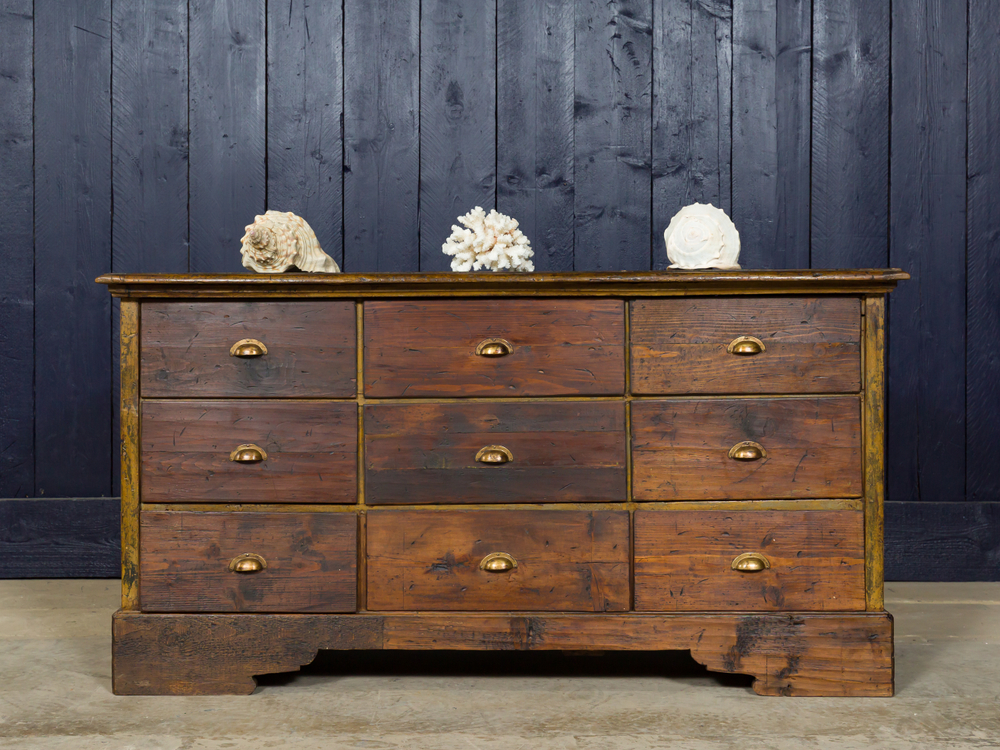
Empire-style antiques are known for their use of dark, heavy woods such as mahogany, cherry, and walnut. These woods are not just aesthetically pleasing but also durable, which was highly valued during the early 19th century. The deep, rich tones of mahogany, in particular, were considered a sign of wealth and sophistication, making them a staple in Empire furniture.
The wood’s polished finish often exhibits a reflective quality, adding to the luxurious look of the piece. If the furniture is made from lighter or softwoods like pine or oak, it is likely not Empire style, as those materials do not align with the characteristic opulence of this period.
Strong Rectilinear Forms
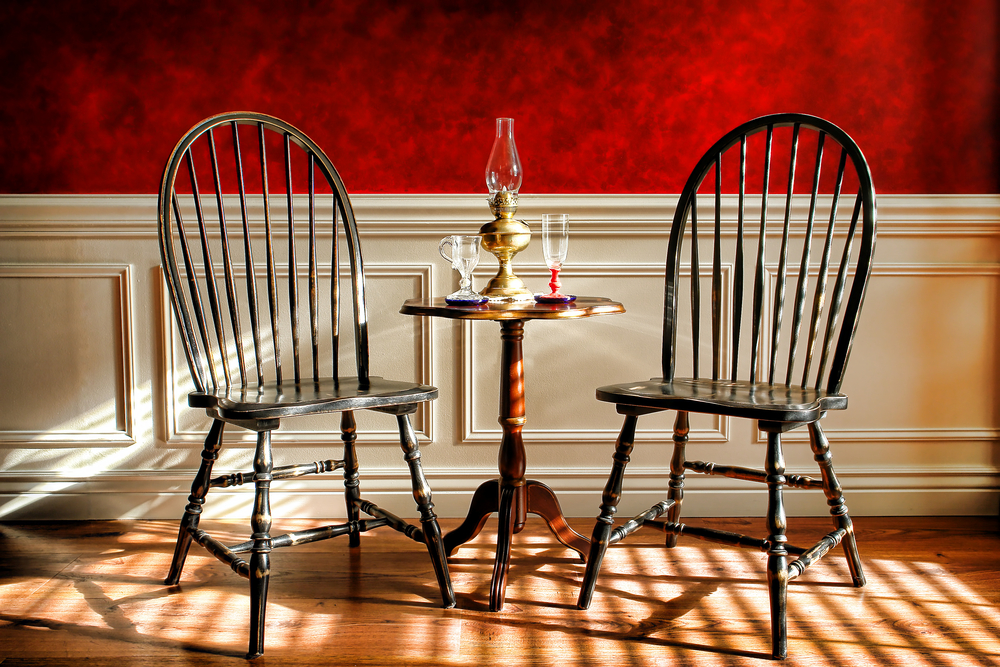
One of the hallmark features of the Empire style is its strong, rectilinear form. Unlike the flowing curves seen in earlier Rococo or Louis XV styles, Empire furniture tends to have sharp, straight lines. The geometric precision is often seen in the structure of tables, chairs, and cabinets.
The emphasis on straight lines and right angles was a reflection of the Neo-Classical influence, particularly the Roman and Greek architectural styles. This design feature lends a sense of stability and grandeur to Empire furniture, making it a key point when identifying a genuine piece.
Bold, Classical Motifs
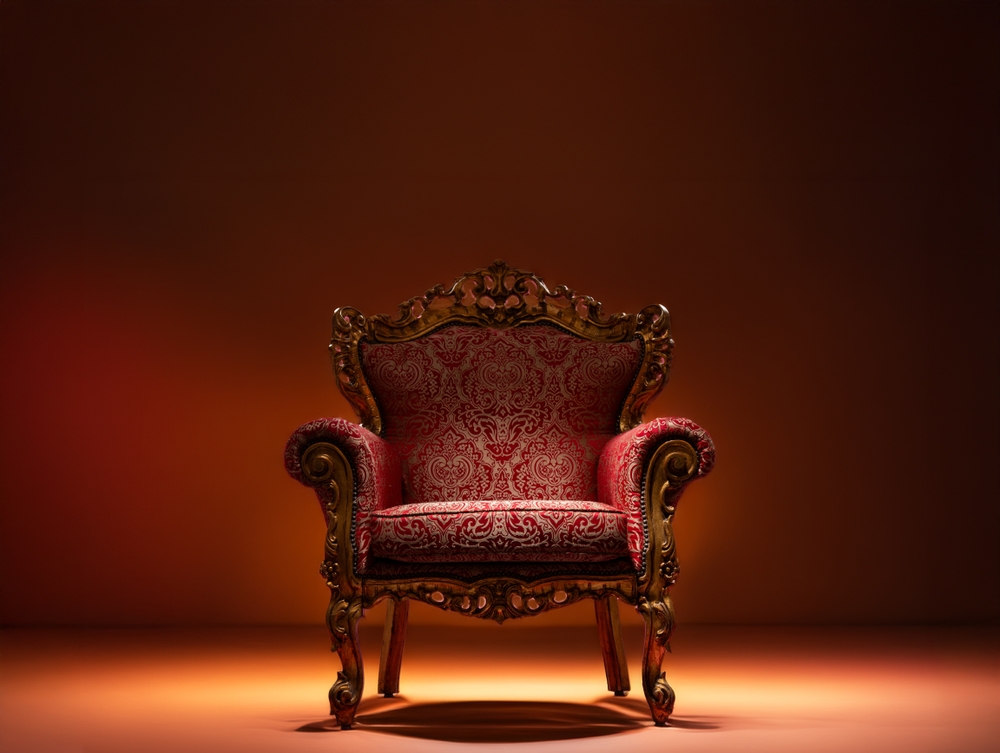
Empire furniture is adorned with bold, classical motifs, such as columns, urns, and eagles. These motifs were inspired by ancient Roman and Egyptian styles, which were highly fashionable during the reign of Napoleon Bonaparte. The use of these decorative elements often suggests a connection to imperial power and grandeur.
The designs are typically sculptural and prominent, making them impossible to miss. For example, the eagle, symbolizing imperial authority, is commonly found on the arms of chairs, pediments, and cabinet doors. This reliance on classical motifs is a strong indication of authentic Empire style.
Regal Upholstery Fabrics
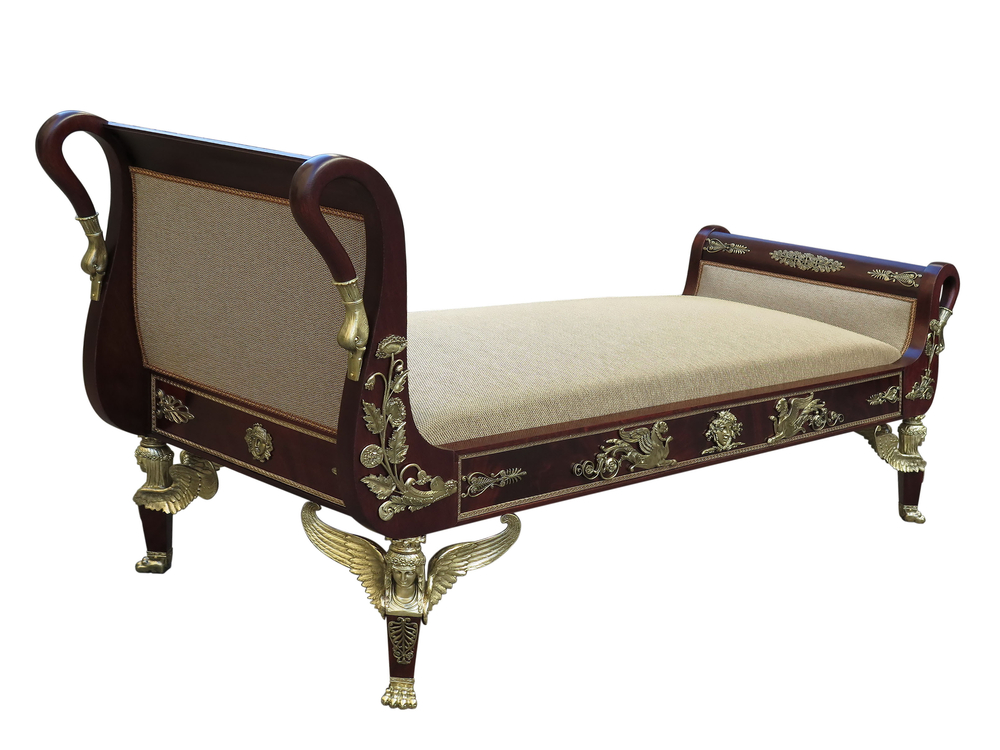
Authentic Empire-style antiques often feature rich, regal upholstery fabrics such as velvet, damask, or brocade. The fabric patterns are typically bold and geometric, with gold or silver thread often incorporated into the design. These luxurious materials were chosen not only for their beauty but for their ability to complement the dark woods and bold shapes of the furniture.
The upholstery serves to elevate the furniture’s overall aesthetic, providing a sense of opulence and formality that matches the heavy, monumental design of Empire-style pieces. If a piece of furniture has worn-out or simple fabrics, it may not be of the genuine Empire style.
Heavy, Solid Construction
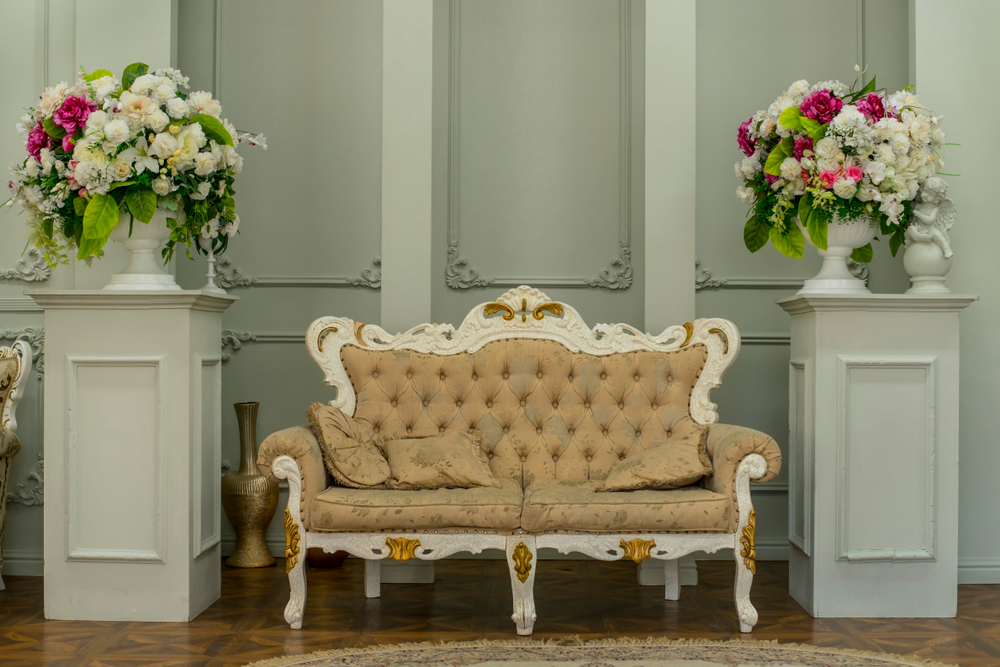
Empire-style furniture is known for its heavy, solid construction. The pieces were built to last and were often designed to make a statement with their substantial weight. This robust construction was a direct reflection of the Empire’s strength and the power it was meant to represent.
When inspecting a potential Empire piece, check the weight and sturdiness. A genuine Empire antique will feel dense and solid, often requiring more than one person to move. Lightweight pieces may be indicative of later styles or reproductions.
Symmetry in Design
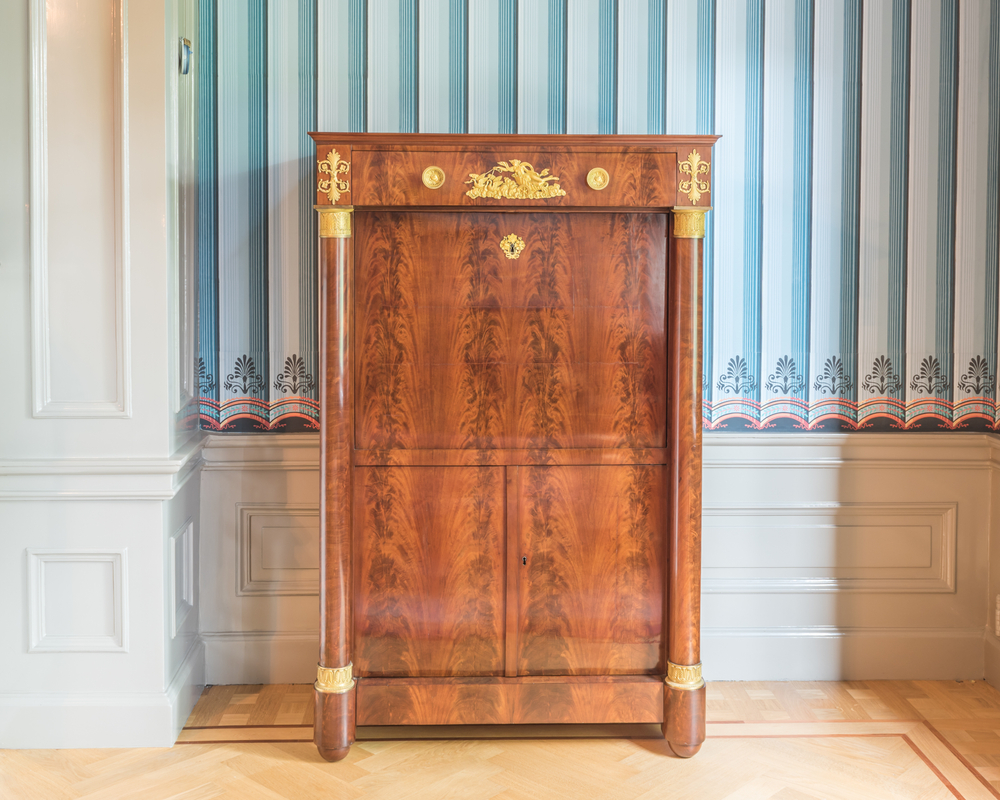
Symmetry is a core principle in Empire style, with designs being perfectly balanced on either side of the piece. Whether in the placement of legs, decoration, or cabinet doors, the emphasis on symmetry symbolizes harmony and order, ideals celebrated in both the classical world and under Napoleon’s regime.
This balance is evident in items like sofas, where the armrests and backrests are evenly aligned, or in tables, where the legs and centerpieces are positioned with equal spacing. If an antique lacks this sense of symmetry, it is likely not of the Empire style.
Carved Details
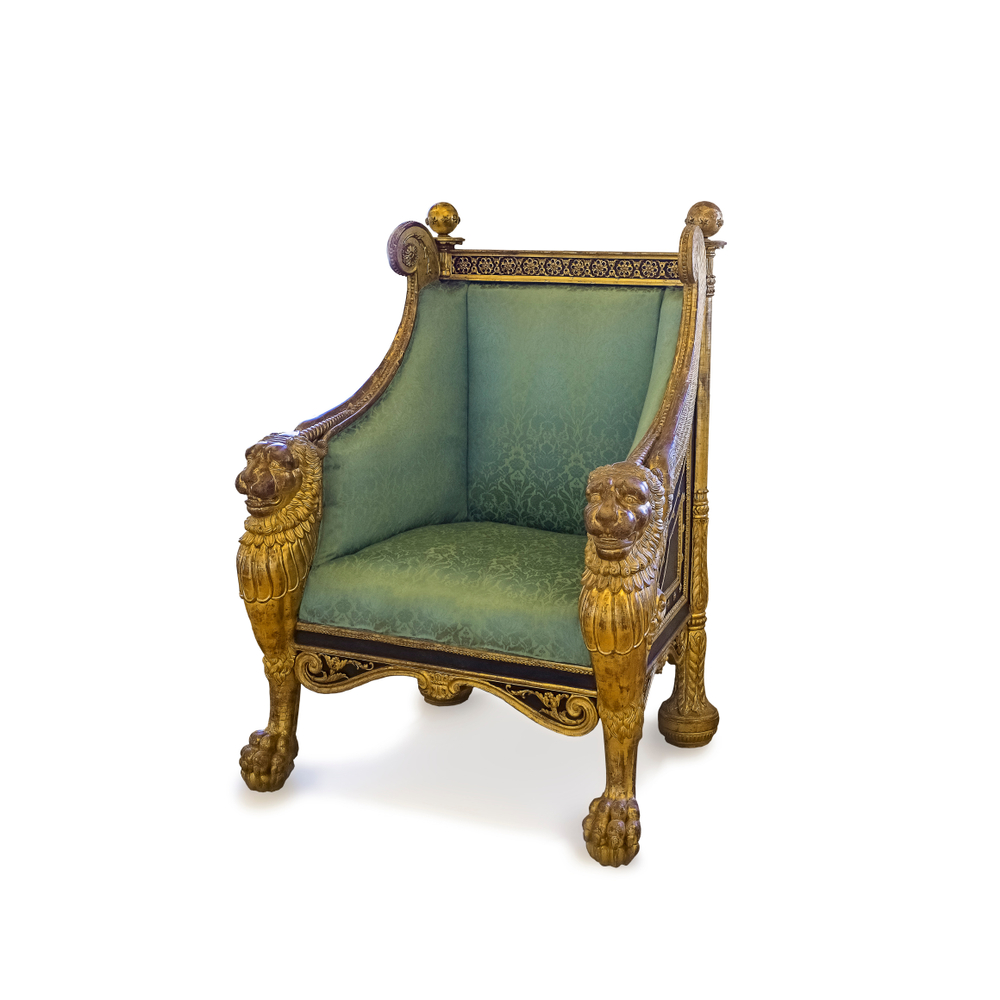
Carving is often a key feature in Empire-style antiques. These carvings are not delicate or intricate like those in Rococo furniture, but instead are bold, angular, and often stylized. Common motifs include lions’ heads, acanthus leaves, and rosettes, which reflect the strong, monumental style of the period.
Unlike more delicate carvings in other styles, Empire carvings are deeper and more pronounced, which gives the pieces a sense of strength. These carvings are typically seen on furniture legs, pediments, and cabinet doors, serving both as decorative and symbolic elements.
Bronze Ornaments and Hardware
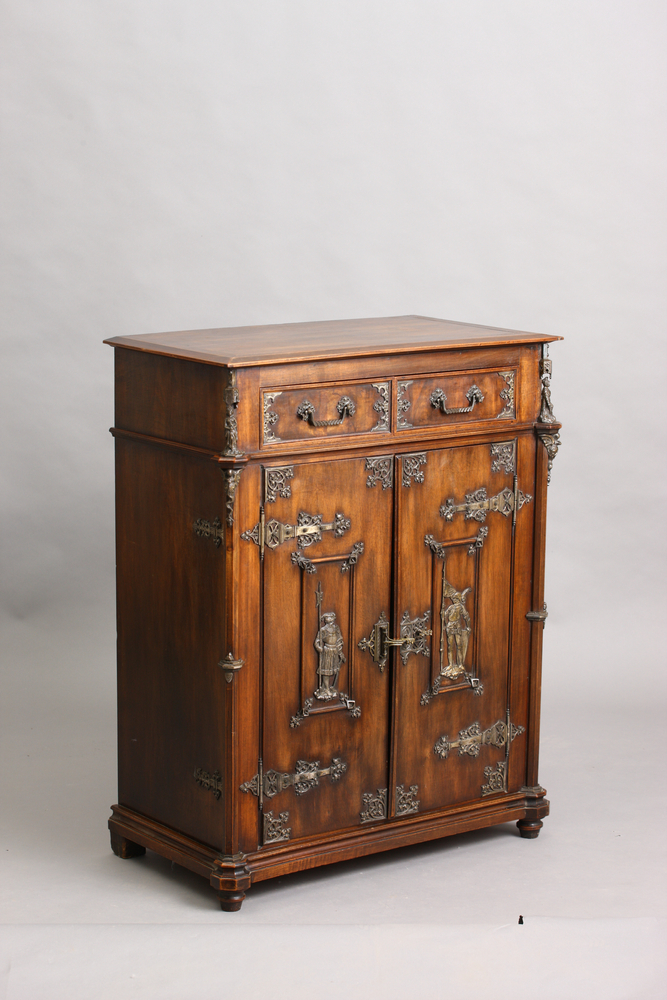
Bronze is frequently used in Empire-style furniture, particularly for decorative hardware. Drawer pulls, escutcheons, and mounts are often made of bronze, and they feature classical designs, including eagles, sphinxes, and medallions. This use of bronze is not only functional but also enhances the luxurious feel of the piece.
The bronze accents provide a striking contrast to the dark wood and give the furniture a refined, imperial look. These elements are key in distinguishing genuine Empire furniture from pieces made in later, less opulent periods.
Monumental Size
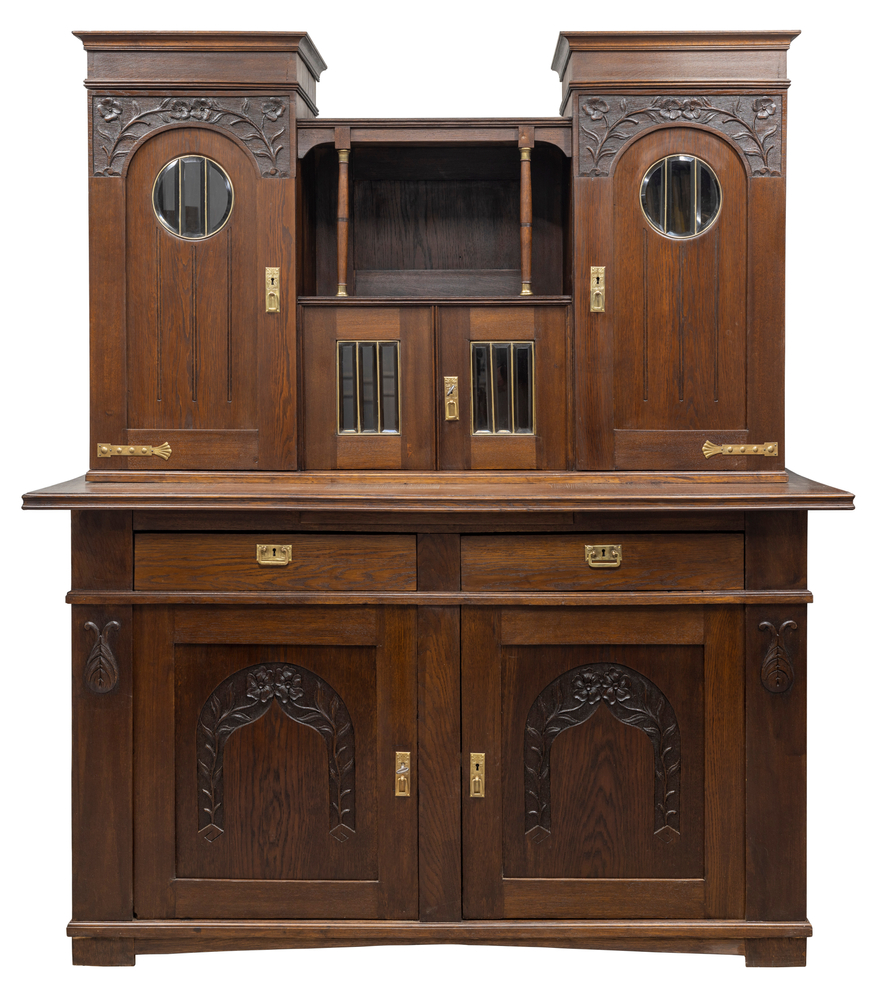
Empire-style furniture tends to be large and imposing. The scale of the furniture is designed to command attention and make a bold statement in any room. Large armchairs, grandiose sofas, and oversized tables are typical of the Empire style.
When assessing an antique, consider its size about the space around it. If the piece feels out of proportion or smaller than expected, it may be a sign that it is not from the Empire period.
Incorporation of Egyptian Influence
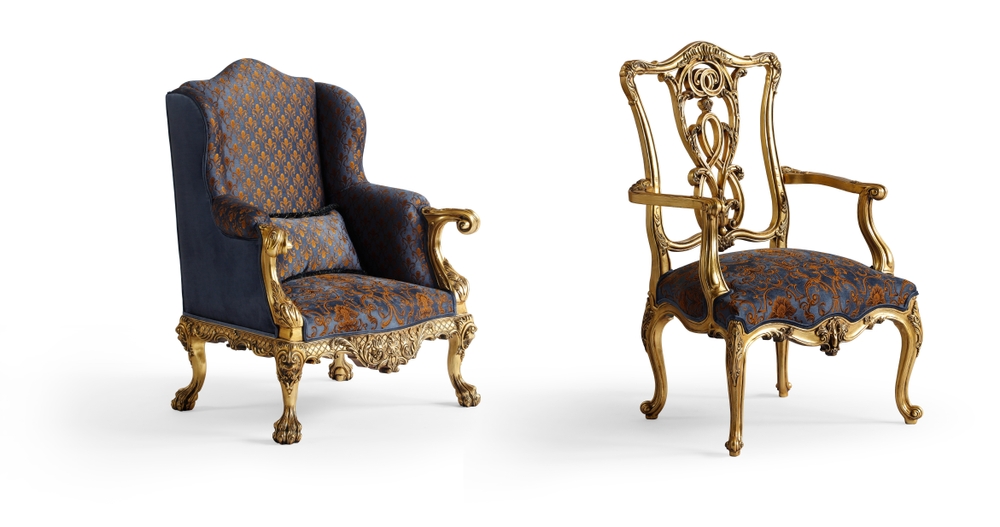
Napoleon’s fascination with Egypt is reflected in the Empire style through the use of Egyptian motifs. These include images of sphinxes, pyramids, and obelisks, as well as furniture legs shaped like columns with lotus flower carvings. This connection to ancient Egypt highlights the grandeur and imperial aspirations of the time.
If you notice Egyptian-inspired elements like stylized figures or architectural shapes, the piece likely belongs to the Empire style, as this influence was highly prominent during the early 19th century.
Napoleonic Symbols
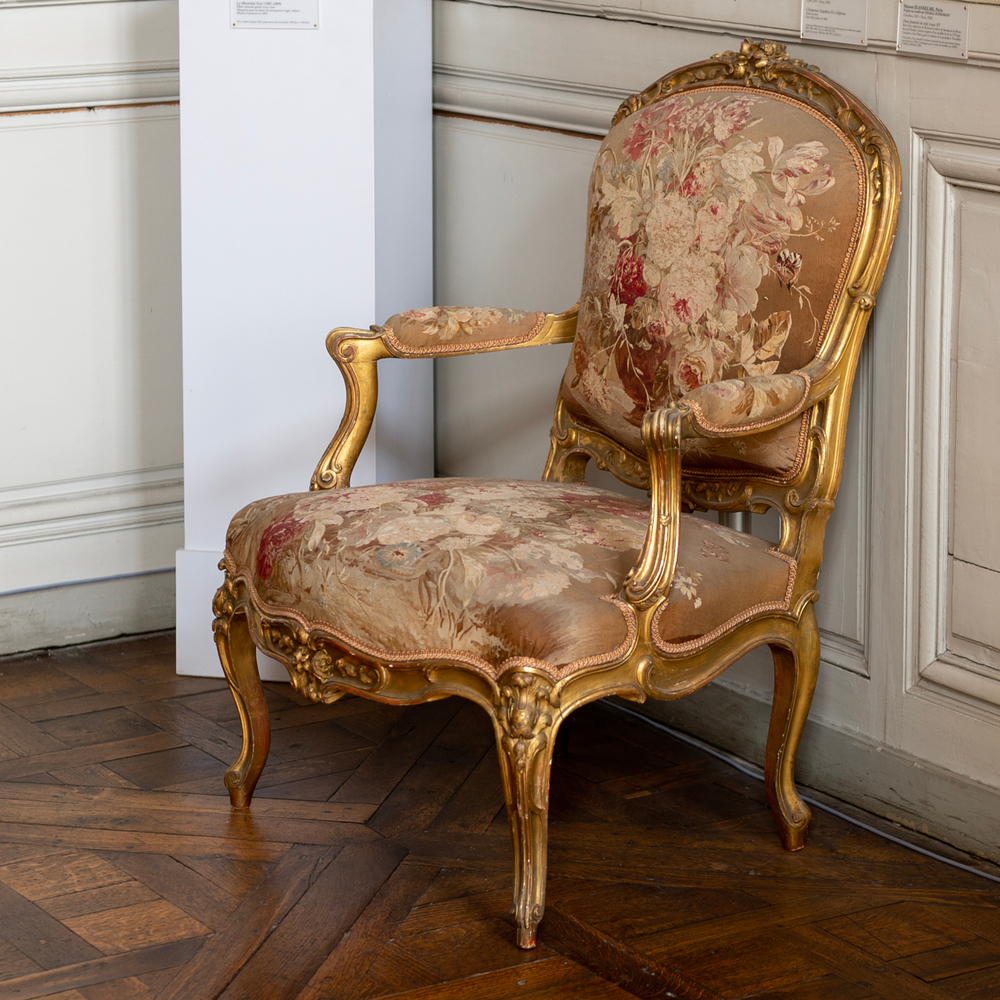
In addition to classical motifs, Empire furniture often incorporates symbols directly associated with Napoleon, such as the letter “N” or the imperial eagle. These emblems reinforce the idea of Napoleon’s reign and are often used as decorative elements in the construction of furniture pieces.
The presence of these symbols is a strong sign of authenticity. Look for these emblems in carvings, medallions, and metalwork, particularly in items that were made during or after Napoleon’s reign.
This article originally appeared on Avocadu.
